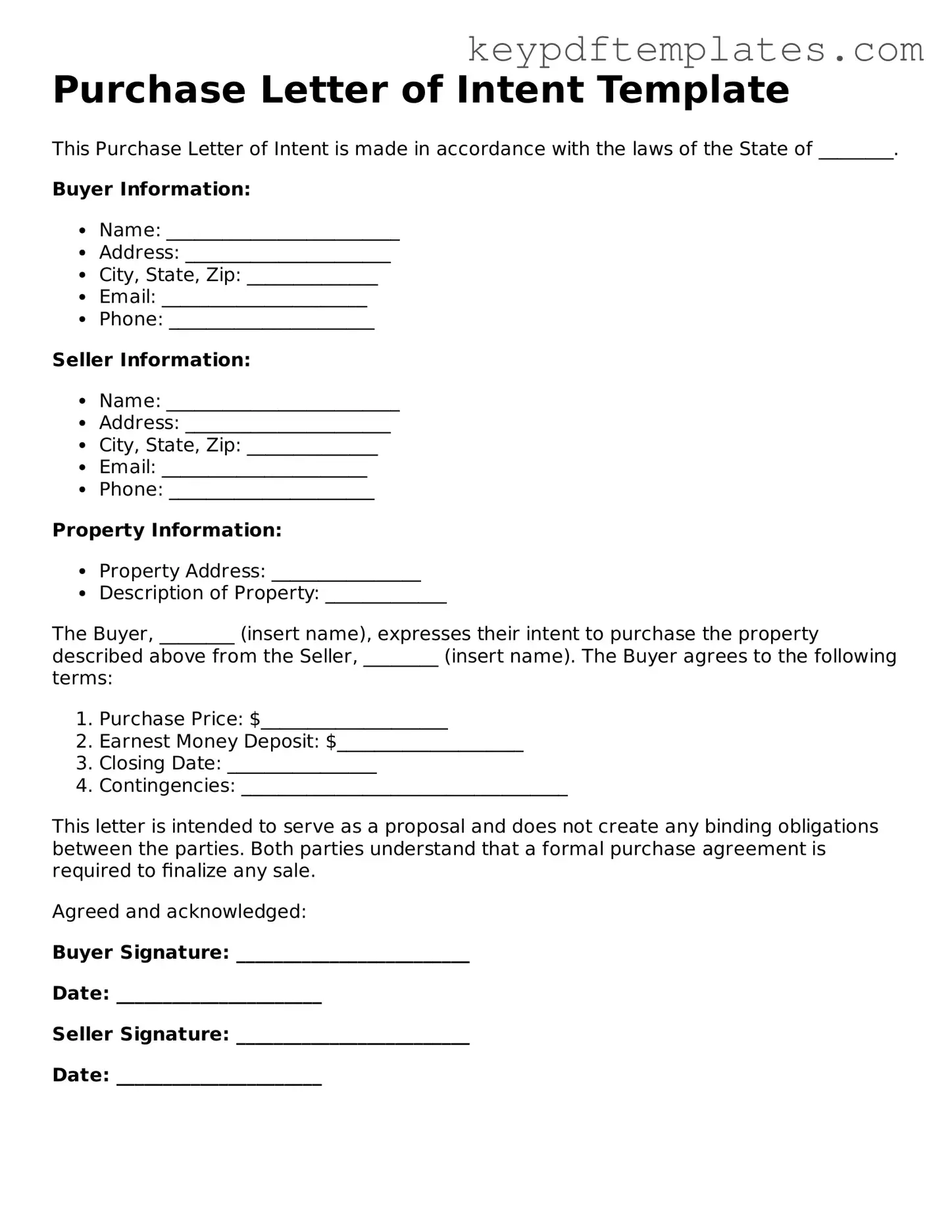When it comes to the Purchase Letter of Intent (LOI) form, several misconceptions can lead to confusion for buyers and sellers alike. Understanding these misunderstandings can help clarify the purpose and implications of this important document.
- Misconception 1: The LOI is a legally binding contract.
Many people believe that a Purchase Letter of Intent is a legally binding agreement. In reality, while it outlines the intentions of the parties involved, it typically serves as a preliminary step and is not enforceable like a formal contract.
- Misconception 2: An LOI guarantees the sale will go through.
Some assume that submitting an LOI guarantees that the transaction will be completed. However, the LOI merely expresses interest and sets the stage for further negotiations; it does not assure that the sale will ultimately occur.
- Misconception 3: The LOI includes all terms of the sale.
It is a common belief that the LOI contains every detail of the sale. Instead, it generally highlights key terms and conditions but leaves many specifics to be determined in a later, more formal agreement.
- Misconception 4: Only buyers need to sign the LOI.
Some individuals think that only the buyer's signature is necessary on the LOI. In fact, both parties usually need to sign to demonstrate mutual interest and commitment to proceeding with the negotiation process.
- Misconception 5: The LOI cannot be amended.
There is a belief that once an LOI is created, it cannot be changed. On the contrary, the LOI can be modified as negotiations progress and new terms are agreed upon by both parties.
- Misconception 6: An LOI is only for real estate transactions.
While often associated with real estate, Purchase Letters of Intent can be utilized in various types of transactions, including business acquisitions and mergers, making them versatile tools in many industries.
- Misconception 7: An LOI eliminates the need for due diligence.
Some believe that once an LOI is signed, due diligence is no longer necessary. However, due diligence remains a critical step in the process, allowing the buyer to verify the details before finalizing the purchase.
- Misconception 8: The LOI is a waste of time.
Lastly, there is a notion that preparing an LOI is unnecessary and time-consuming. In reality, a well-crafted LOI can streamline negotiations, clarify intentions, and lay the groundwork for a successful transaction.
